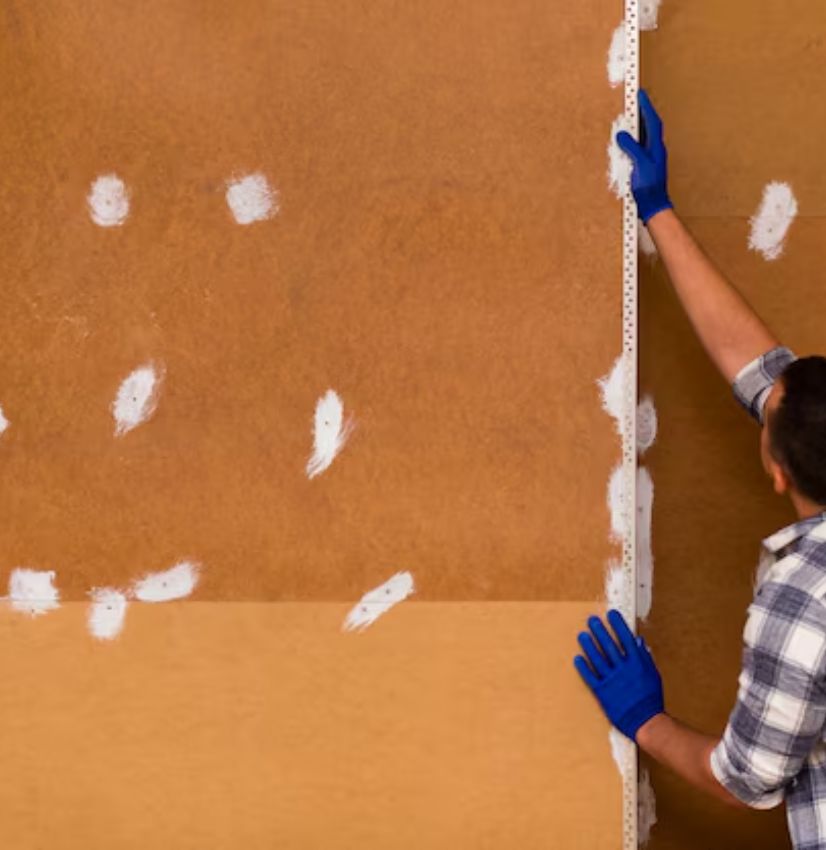Removing a wall can transform a home, adding space and light, but it’s essential to approach it with caution. A single misstep in this process can compromise the structural integrity of your home. In this guide, we’ll walk through everything you need to know to safely remove a wall, from assessing wall types to understanding safety precautions and best practices.
Understanding Wall Types: Load-Bearing vs. Non-Load-Bearing
Load-Bearing Walls: The Backbone of Your Home
Load-bearing walls are essential components in a home’s framework, carrying weight from the roof and upper floors down to the foundation. If you remove or alter a load-bearing wall without the right precautions, you risk weakening the structure, which can lead to serious damage.
Indicators of load-bearing walls include:
- Alignment with other structural walls on multiple floors
- Proximity to main support beams or columns
- Thicker construction compared to non-load-bearing walls
Non-Load-Bearing Walls: Easier to Remove
Non-load-bearing walls don’t support the home’s structural load, meaning they don’t carry any weight beyond their own. They are primarily used to divide rooms or provide a layout within the home. However, it’s crucial to verify a wall’s function, as removing a wall without confirmation can still lead to costly repairs.
How to Identify Wall Types
While there are visual cues for wall type, you should always consult the original building plans or seek the help of a structural engineer if you have any doubts. Taking this step ensures you proceed safely.
Planning for Wall Removal: The Key to Safety
Setting a Budget and Timeline
Removing a wall can be an investment, especially for load-bearing walls. Costs may include tools, temporary supports, structural reinforcements, and professional fees if you bring in an engineer or contractor. Planning a timeline helps you anticipate disruptions and allows time for unexpected delays.
Preparing for Utility Rerouting
Walls often contain electrical wiring, plumbing, or HVAC ducts. Before starting, consult with an electrician or plumber to disconnect and reroute any utilities as needed. This step can prevent accidents and ensures a smoother wall removal process.
Gathering Essential Tools and Safety Gear
Proper tools are essential to ensure safety and precision. Here’s a list of essentials:
- Tools: Hammer, utility knife, reciprocating saw, pry bar
- Safety Gear: Goggles, gloves, dust mask, and a hard hat to protect from dust and falling debris
- Support Materials: If it’s a load-bearing wall, you’ll need temporary support beams to bear the load during the process.
Step-By-Step Guide to Safely Removing a Wall
Step 1: Turn Off Power and Utilities
Before removing drywall or cutting into the wall, turn off all power to the area. Check for live wires, pipes, or gas lines, which could lead to severe safety hazards if cut or damaged.
Step 2: Build Temporary Support (if Necessary)
If removing a load-bearing wall, building temporary supports on either side of the wall is essential to hold the load while you work. Proper support prevents the ceiling or upper floors from sagging, which could lead to structural damage.
Step 3: Remove Drywall Carefully
Use a utility knife or reciprocating saw to cut into the drywall, and carefully pull it away to reveal the internal structure. Take your time to avoid damaging electrical or plumbing elements hidden behind the wall.
Step 4: Disconnect Utilities
Once the drywall is removed, you may encounter wires or pipes. Disconnect these elements carefully and call in a professional if you’re unsure. Damaging a hidden water or electrical line can create a safety hazard and increase repair costs.
Step 5: Take Out Studs and Frame
With the utilities out of the way, use a reciprocating saw or pry bar to remove the wall studs, taking care to avoid damaging surrounding structures. Ensure that you remove each part of the frame one piece at a time, checking for hidden screws or nails.
Step 6: Reinforce with Beams or Columns
For load-bearing walls, this step is crucial. Replace the wall’s function by installing a structural beam or column that transfers the load to the foundation or adjacent walls. A structural engineer can advise on the correct type and placement of beams to meet building codes.
Step 7: Clean Up and Inspect
Once the wall is down, remove debris carefully and inspect the area to ensure that all structural and utility aspects are stable. If necessary, patch the floor, ceiling, and surrounding walls to maintain the room’s aesthetic appeal.
Finishing Touches: Polishing Your Newly Opened Space
Repairing Adjacent Walls and Ceilings
Removing a wall can leave unsightly gaps and edges where the wall once connected. You’ll likely need to patch and paint the surrounding walls and ceiling for a seamless look.
Addressing Floor Gaps
If your floor has missing sections where the wall stood, consider adding matching materials or hiring a flooring professional for a seamless appearance.
Common Mistakes to Avoid
Ignoring Structural Assessments
Skipping a structural assessment is one of the most common mistakes. Misjudging a wall as non-load-bearing can lead to serious damage, including sagging floors or ceilings.
Failing to Plan for Utility Rerouting
If utilities are not properly addressed, you risk cutting into essential systems, which can lead to damage, added costs, and significant inconvenience.
Working Without Safety Gear
Always wear safety gear, as wall removal involves tools, dust, and potentially hazardous debris. This keeps you protected and minimizes injury risks.
Conclusion: Safely Transforming Your Home’s Layout
Removing a wall can enhance your home’s space, creating an open, airy feel. But careful planning and attention to structural safety are essential. With the right tools, expert advice, and a step-by-step approach, you can achieve a beautiful transformation without compromising your home’s integrity. Always remember, when in doubt, consulting a professional is the best choice to avoid costly errors.
FAQs
1. Can I remove a wall myself, or do I need a professional?
You can remove a non-load-bearing wall yourself with proper tools and knowledge. However, load-bearing walls should involve a professional or structural engineer to ensure safety.
2. How can I tell if a wall is load-bearing?
Load-bearing walls are often aligned with beams, located near the center of the home, and are generally thicker than non-load-bearing walls. A structural engineer or original building plans can confirm this.
3. Do I need a permit to remove a wall in my home?
For load-bearing walls, permits are usually required. Check with your local building authority to ensure compliance with regulations.
4. What safety equipment do I need for wall removal?
Essential safety equipment includes goggles, gloves, a dust mask, and a hard hat to protect against dust and falling debris.
5. What happens if I remove a load-bearing wall without support?
Removing a load-bearing wall without support can cause sagging, structural shifts, or even collapse. Always provide temporary support during removal and install permanent reinforcements.
6. How can I fix the floor gap after wall removal?
Floor gaps left by wall removal can be patched with matching flooring materials. A flooring professional can help ensure a seamless finish.
7. What are the risks of not rerouting utilities correctly?
Failing to reroute utilities can lead to electrical hazards, water leaks, and system malfunctions. Always check for utilities and hire professionals if needed.




